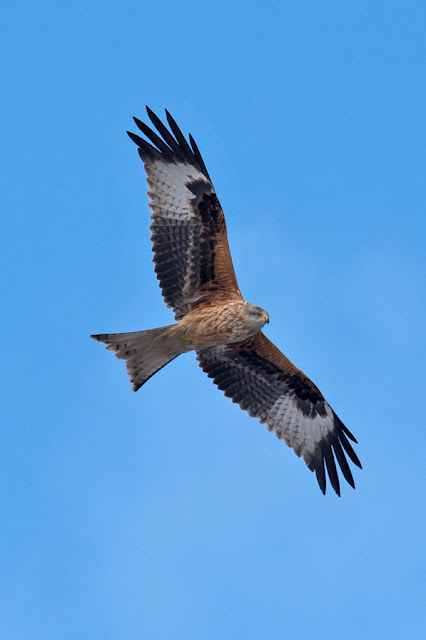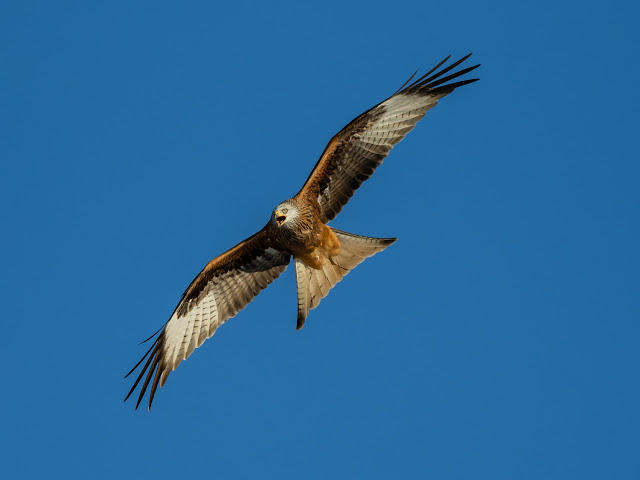Black Kites moving north to the UK
Be aware of the differences between Blacks and resident Reds
 |
Black Kite © Christoph Meier - Zwicky |
- Black Kite
- Slightly smaller size, compared to Red less deeply forked tail
- On occasion and under some conditions fork tail not perceived as below in tight turn
- More uniform colour dark brown
A wide spread summer raptor distributed across the whole of continental Europe, the Black Kite is also widely distributed through temperate and tropical parts of Asia and parts of Australasia, with the temperate region populations tending to be migratory. Several subspecies are recognized, and the European populations are relatively small, with a large population in South Asia.
Found from semi desert, to grassland, savanna and woodland, with wooded areas particularly important for nesting and roosting, Black Kites avoid dense forest. They are commonly found in aquatic habitats, e.g., large water, wetlands, seashores or in meadows, and along land masses near wetlands, and can also be abundant in drier regions.
Black Kites fly north from the African continent, across the strait of Gibraltar into Europe
in February. Their mass movement is quite phenomenal with tens of thousands birds in the air together. Due to climate change, in recent years, Black Kite spring migration reaches as far north as Scotland.
A brood in Britain is imminent
British Trust of Ornithology states that Black Kites are one of 10 birds likely to colonise the UK in the coming years, as average temperatures increase. Since 2010, an average of 25 Black Kites have been observed in the UK every year, most commonly in Kent.Red Kite
- Prominent light wing patches
- Distinct forked tail
- Contrasting colours
 |
| © Christoph Meier - Zwicky |
Juvenile Red Kites (above and below) note subtle breast plumage difference
 |
| © Christoph Meier - Zwicky |
London...the city of kites and crows
Shakespeare refers to London as "The city of kites and crows," and many jump to the conclusion that the reference is to Red Kites because the bird is now present in modern times. There is a real possibility that it was in fact, Black Kites, in the 16th century. And still today Black Kite Milvus migrans is a scavenger of many a global city.
Beware of this subtle difference:
Red Kite: Paler band across upper wing coverts is broader and more conspicuous...







Nice prediction looks like they are actually coming!
ReplyDelete